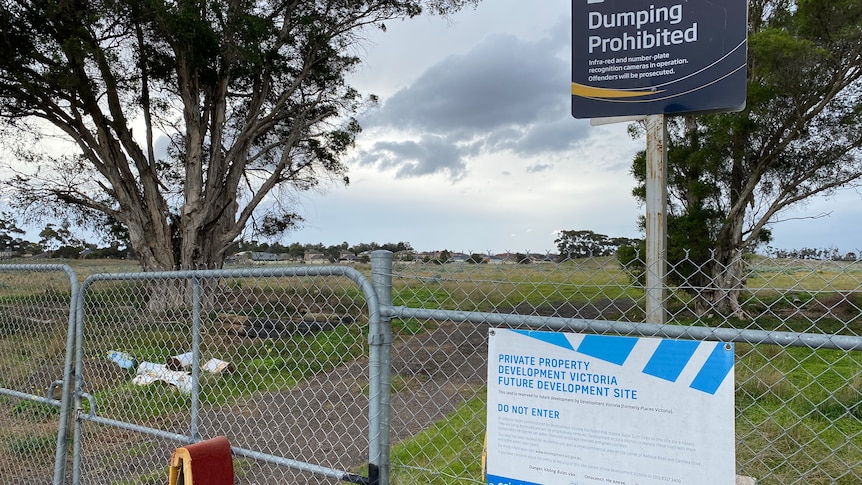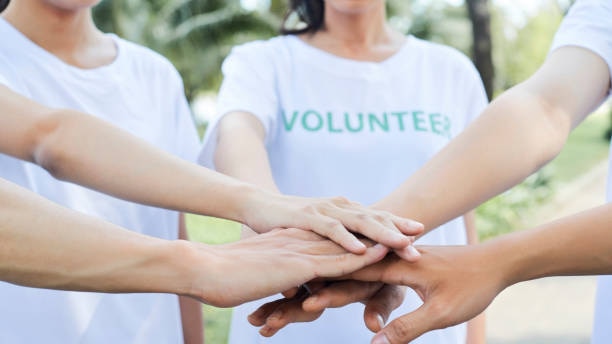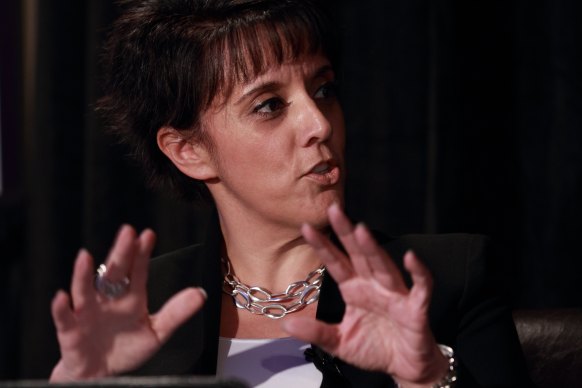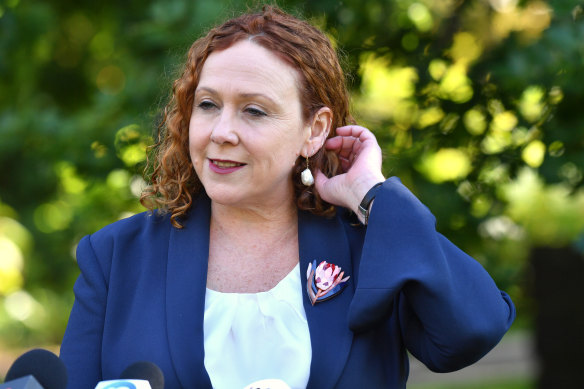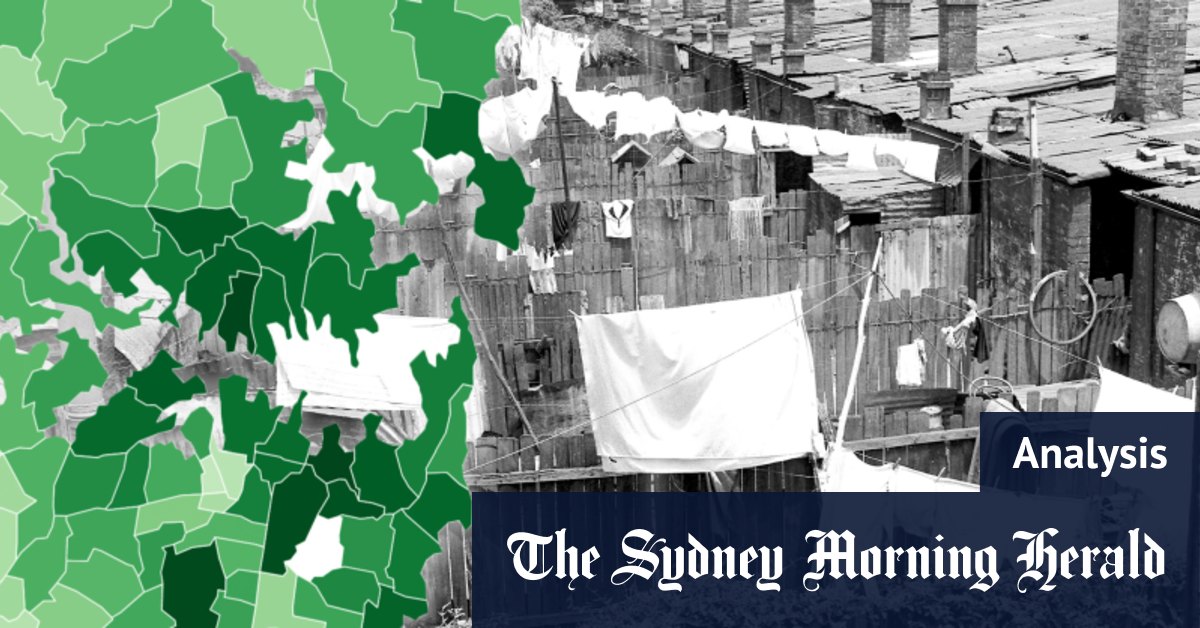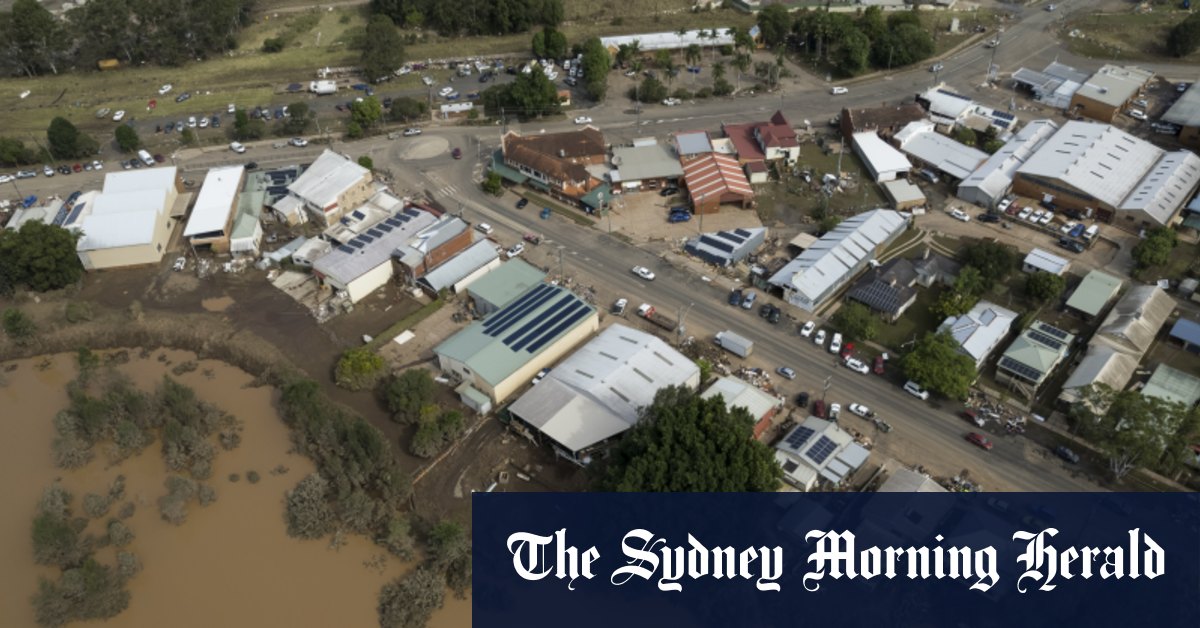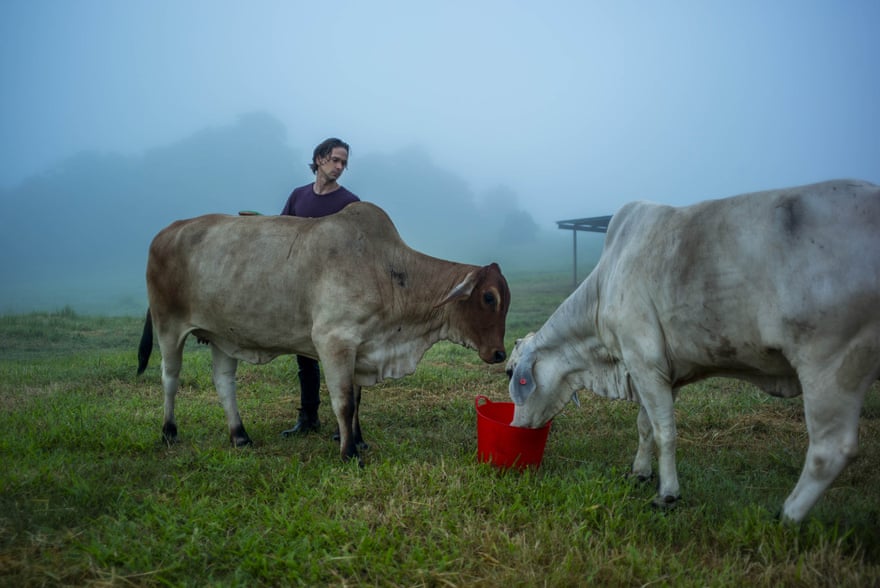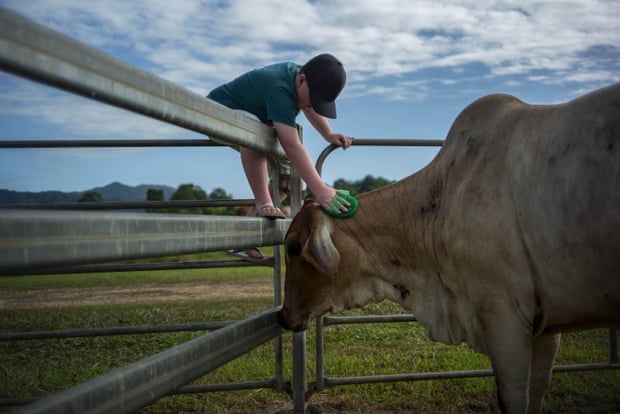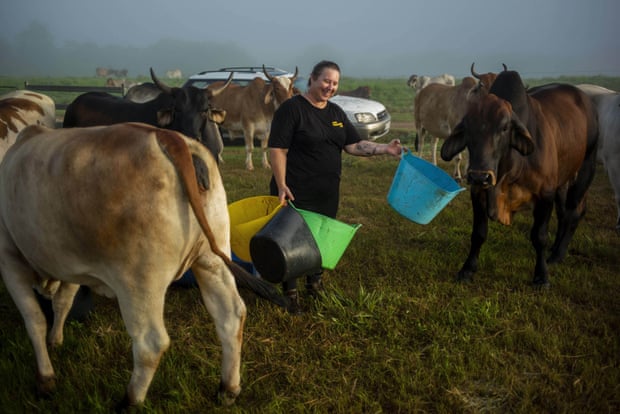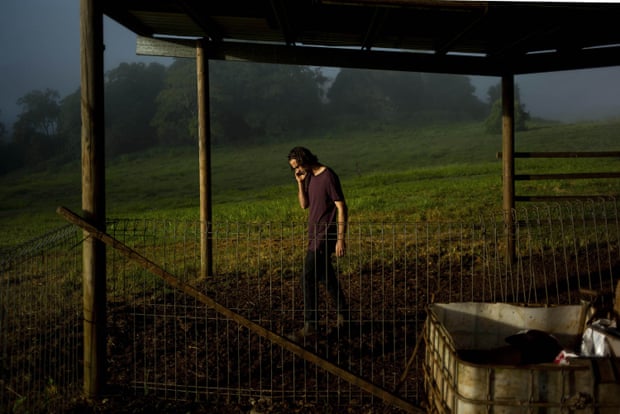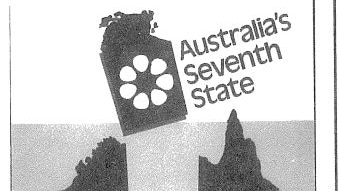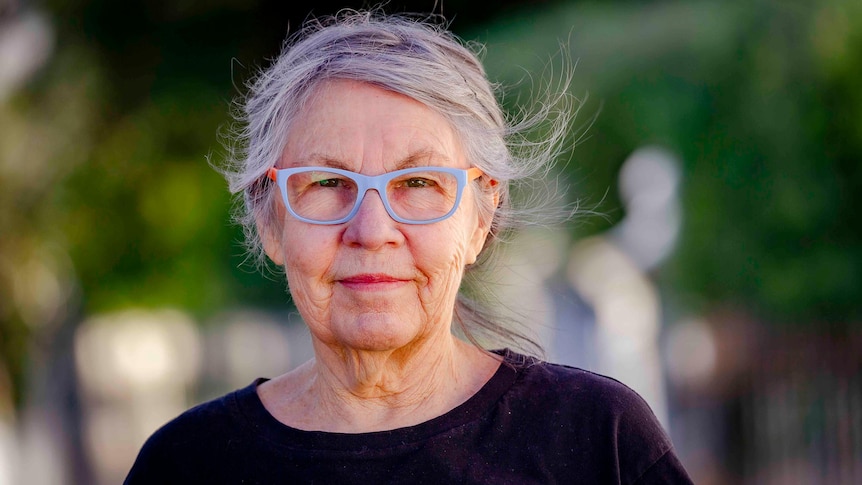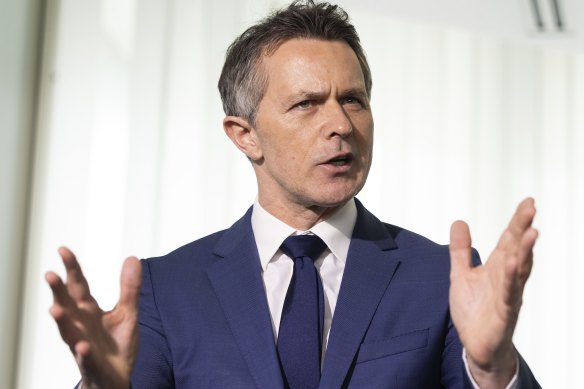Community leaders in Melbourne’s west have raised concerns a plan to convert a slice of land next to a freeway into more than 800 homes could result in social isolation for its new residents, unless major changes are made.
Key points:
- A quarter of the Cairnlea project would be affordable and social housing
- There are also concerns about the project’s proximity to late-night pokies venues
- Development Victoria says the project is well located near schools, jobs and other services
The proposed 41-hectare site in Cairnlea is just off the busy Western Ring Road and was part of the Albion Explosives Factory from the 1940s to the 1980s.
Development Victoria plans to build 840 homes on the site, 25 per cent of which will be affordable and social housing.
Graeme Blore has spent 17 years working in Cairnlea with communities dealing with social disadvantage.
He wants to see more social housing in the suburbs, but he is not convinced Development Victoria’s plans strike the right balance.
“It’s a vital issue, and really important to every community, but it actually needs to be done in a way that’s holistic, that embraces and enhances community,” he said.
One of his main concerns is the site’s proximity to late-night pokies venues on Ballarat Road.
The venues netted $80,000 per day in 2019-2020, according to Brimbank City Council data.
The council area, which covers Cairnlea and surrounding suburbs such as Deer Park and St Albans, has the highest pokies losses in the state — an average of $444,000 per day or $92 million per year.
“It has the potential to end up as a social housing ghetto, with a lack of opportunity,” Mr Blore said.
The plans from Development Victoria include 30 per cent open space, a “mixed use” shopping area, an adventure playground and a soccer pitch.
But Mr Blore said lots of locals were concerned there would not be enough community facilities.
“We want volleyball, we want netball, we want basketball, we have not one set of Aussie rules goalposts anywhere in Cairnlea, we don’t even have a spot where people can practice hitting a tennis ball against the wall,” he said.
“We want training and meeting rooms next door where we can actually conduct ESL [English as a Second Language] and training classes and actually teach people and give them employment skills.”
Community fears ‘wonderful opportunity’ may not be realized
Jon Tran, a local minister, wants more activities to encourage new residents away from the pokies.
“We’re concerned that there’s going to be further entrenching of social disadvantage through poor planning,” he said.
He doesn’t want this development to be a missed opportunity.
“There is a wonderful opportunity here, right?” he said.
“That we could be building places and spaces that bring people together that celebrate diversity and give expression to the creativity that’s in our community.”
No one from Brimbank City Council was available for an interview with the ABC, but in its submission to Development Victoria, the council expressed similar concerns.
“In summary, the reliance on private sector investment, insufficient public transport offer, poor accessibility to some key community uses, and no clear mechanism to deliver the mixed use area, could result in a future development that is insufficiently serviced and isolated,” the submission said.
Push to retain trees in a canopy-starved pocket of Melbourne
Development Victoria plans to plant 3,000 trees, but some in the community say these will take decades to mature and are angry hundreds of trees are being removed.
A submission from Infrastructure Victoria last year noted the lack of tree canopy cover in Melbourne’s outer west and northern suburbs.
In Melbourne, the western suburbs have the lowest urban tree cover across the city with 5.5 per cent, while the eastern suburbs have more than 20 per cent.
Greg Moore, an arboriculturalist and botanist, told the planning panel more should be done to protect the trees.
“It seems almost inconceivable that none of 570 trees are worthy of retention in a part of Melbourne that is noted for its lack of trees and low canopy cover,” Dr Moore said.
‘Significant concerns’ held by council
Cairnlea was home to the Albion Explosives Factory between the 1940s and 1980s.
The soil at this site has been remediated for open space, and an independent auditor will oversee the remediation of the site for residential use.
Mr Blore is concerned about the contaminated soil, particularly at Gateway Hill, near a planned adventure playground.
“Gateway Hill is the site where most of the toxic soil from the Albion Explosives Factory clean-up was stored,” he said.
“We need complete and utter clarity about what is stored at the site, what are the safety risks and the long-term potential effects.”
The Environment Protection Authority (EPA) is satisfied the contaminated soil will be dealt with safely, but they are concerned about the health impacts of noise coming from the Western Ring Road.
However, the Brimbank City Council’s submission to Development Victoria said there were significant risks and costs with the management of the contaminated land and that the plans as they stood did not comply with their standards.
In April, the council said they held “significant concerns” over the proposed development of Cairnlea.
“This development has the potential to deliver a range of economic, social and environmental benefits to Brimbank – but not in its current proposed form,” Brimbank Senior Jasmine Nguyen said.
Development Victoria’s property development group leader Penny Forrest said the development would provide a mix of housing and social opportunities.
“We’re making sure more Victorians can own a home — with developments like Cairnlea delivering affordable housing near schools, jobs and other services,” she said.
The plans from Development Victoria are not finalized, with an advisory committee due to hand its report to the planning minister later this month.
Young family unconvinced by latest plans
Sahra Aden is a single mother who has been on the public housing priority list waiting for more than a decade. But she would rather stay in her overcrowded flat in Carlton than move to Cairnlea.
Ms Aden and her children already feel a sense of isolation and disillusionment with politics but hearing about the plans for a new social housing estate on the site of a former munitions factory that is walking distance to pokie venues has made it worse.
Ms Aden worries about how her young sons would fare in an area without the services and social opportunities like Carlton.
“I have teenagers, boys, and I want a better place for them, not a place where gambling is accessible,” Ms Aden said.
“A lot of concerns [I] started to think, ‘oh the government now is going to shut us out somewhere isolated’.'”
.
